GrabCAD

HensNest v2
by GrabCAD
Last crawled date: 1 year, 10 months ago
The HensNest
About the Design
The HensNest was created to address some of the most pressing issues with current face mask hacks. It was inspired by both The NanoHack by Copper3D and the DIY Face Mask by Mark Fuller. The HensNest has a flexible printed hoop frame that conforms to the face without post-processing steps, like using a heat gun or applying a sealant. The filter surface area is very large, addressing issues with the breathability of hard-sided mask designs with small filter towers, like The NanoHack. The HensNest adds a tented structure to the design that keeps the filter surface away from the mouth and nose, which we learned from our clinical collaborators is critical for keeping the filter dry and functional during extensive use. Lastly, this design is mostly planar and is fast and cheap to print. If you have design improvement suggestions, please post to the comments section below.
Release Notes for v2.0
The v2.0 HensNest design is production ready and includes complete assembly instructions. We are continuing to make minor tweaks to the design and will update these release notes as we progress.
1. DESIGN MODIFICATIONS: HensNest v2.0 features two important design improvements from v1.0, namely, (a) an interior retaining ring that secures the filter in place; and (b) ergonomic improvements to the lofted wireframe to fit more comfortably around the nose while holding the filter material further from the face.
2. FILTER MATERIAL: We have been experimenting with several commonly available filter materials, and our current recommendation is to use one ply of a (clean!) furnace filter. We recommend higher performance filters like 3M Filtrete Ultra Allergen Air Filters, which have an MPR rating of 1500. We are still in the process of respirator fit testing this design, and we will release these results as soon as they are available.
3. SECUREMENT STRAPS: Current assembly instructions for HensNest v2.0 incorporate household rubber bands to secure the mask to the face. We present both a 4-point and 2-point securement option, with the 4-point being more strongly recommended. We recognize that comfort is a priority for longer duration use of the mask, and we are presently working on slight design modifications to improve the comfort of the securement straps.
Release Notes for v1.0
We released HensNest v1.0 to give the maker community a chance to further “hack” our improved wireframe design. We will continuously release design improvements and updates related to the wireframe design and all of the release notes listed below.
1. ASSEMBLY: Assembly for The HensNest is similar to the DIY Face Mask by Mark Fuller and involves first securing the disposable filter within the wireframe. Rubber bands or elastic straps should be connected at the four tabs on the wireframe to create two continuous loops around the head, similar to a disposable N95 mask design. We will release detailed assembly instructions and an assembly video very shortly.
2. STERILIZATION: The HensNest was designed with the intention of having a disposable filter (more on that in a sec) and a reusable wireframe. We recommend printing the wireframe in ABS to allow for both heavy disinfectant use and steam sterilization via hospital sterilizer or home dishwasher. If you’re printing in PLA/PETG, recognize that it will likely not be tolerant to steam sterilization but should not excessively degrade with bleach or alcohol disinfectants.
3. FILTERS: Right now, we are experimenting with different filter types to achieve as close as possible to an N95 rating (knowing that we will not really achieve N95 rating). At present, we are testing vacuum cleaner bags, household heater air filters, and any other common filters we can get our hands on. We are fortunate to have an environmental safety and health officer at our institution who can run both qualitative and quantitative respirator fit tests. We will post these results as we get them. If you have suggestions for other filter types, please post to the comments section below.
About the Team
The HensNest is a collaborative project from the University of Delaware’s (UD), home of the Blue Hens. The design was conceived and early prototypes manufactured in The Design Studio , which is an undergraduate teaching and learning makerspace in the UD Department of Mechanical Engineering. The project is led by Mr. Whitney Sample, Co-Director of The Design Studio and an industrial designer by training. Whitney has extensive experience in medical device design, and he “hacked” the HensNest design over the course of several long days in the Studio. Design and CAD support for the project was provided by Design Studio teaching assistant Arnav Prasad, with logistical support from faculty members Prof. Jenni Buckley and Prof. Ajay Prasad. Extensive clinical consultation and inspiration was provided by Dr. Lisa Lattanza, Chair of the Department of Orthopaedic Surgery at Yale University and Co-Founder (with Prof. Buckley) of The Perry Initiative. The group would also like to thank Mike Gladle from UD environmental health and safety and all members of UD’s MakerNetwork and College of Engineering who helped with project logistics.
Liability
The HensNest should be used only as a last resort when FDA-regulated masks are not available for home or medical use. At present, the HensNest has not been tested using either qualitative nor quantitative respirator fit tests. We will post these results as soon as they are available, along with our recommendations for filter materials. The HensNest design files and manufacturing notes are presented “as is” in a good faith effort by all parties to help with the COVID-19 pandemic. If you use, copy or share this Item, you agree to utilize these files for production of masks at your own risk and comply with any state and federal guidelines for use of these devices. You also agree that HensNest team members and their employer: (1) Disclaims any warranties related to fitness of use, non-infringement, or compliance with regulatory standards; and (2) Have no liability for any claims of any kind made by person, either as a result of use of or as related to the Item.
About the Design
The HensNest was created to address some of the most pressing issues with current face mask hacks. It was inspired by both The NanoHack by Copper3D and the DIY Face Mask by Mark Fuller. The HensNest has a flexible printed hoop frame that conforms to the face without post-processing steps, like using a heat gun or applying a sealant. The filter surface area is very large, addressing issues with the breathability of hard-sided mask designs with small filter towers, like The NanoHack. The HensNest adds a tented structure to the design that keeps the filter surface away from the mouth and nose, which we learned from our clinical collaborators is critical for keeping the filter dry and functional during extensive use. Lastly, this design is mostly planar and is fast and cheap to print. If you have design improvement suggestions, please post to the comments section below.
Release Notes for v2.0
The v2.0 HensNest design is production ready and includes complete assembly instructions. We are continuing to make minor tweaks to the design and will update these release notes as we progress.
1. DESIGN MODIFICATIONS: HensNest v2.0 features two important design improvements from v1.0, namely, (a) an interior retaining ring that secures the filter in place; and (b) ergonomic improvements to the lofted wireframe to fit more comfortably around the nose while holding the filter material further from the face.
2. FILTER MATERIAL: We have been experimenting with several commonly available filter materials, and our current recommendation is to use one ply of a (clean!) furnace filter. We recommend higher performance filters like 3M Filtrete Ultra Allergen Air Filters, which have an MPR rating of 1500. We are still in the process of respirator fit testing this design, and we will release these results as soon as they are available.
3. SECUREMENT STRAPS: Current assembly instructions for HensNest v2.0 incorporate household rubber bands to secure the mask to the face. We present both a 4-point and 2-point securement option, with the 4-point being more strongly recommended. We recognize that comfort is a priority for longer duration use of the mask, and we are presently working on slight design modifications to improve the comfort of the securement straps.
Release Notes for v1.0
We released HensNest v1.0 to give the maker community a chance to further “hack” our improved wireframe design. We will continuously release design improvements and updates related to the wireframe design and all of the release notes listed below.
1. ASSEMBLY: Assembly for The HensNest is similar to the DIY Face Mask by Mark Fuller and involves first securing the disposable filter within the wireframe. Rubber bands or elastic straps should be connected at the four tabs on the wireframe to create two continuous loops around the head, similar to a disposable N95 mask design. We will release detailed assembly instructions and an assembly video very shortly.
2. STERILIZATION: The HensNest was designed with the intention of having a disposable filter (more on that in a sec) and a reusable wireframe. We recommend printing the wireframe in ABS to allow for both heavy disinfectant use and steam sterilization via hospital sterilizer or home dishwasher. If you’re printing in PLA/PETG, recognize that it will likely not be tolerant to steam sterilization but should not excessively degrade with bleach or alcohol disinfectants.
3. FILTERS: Right now, we are experimenting with different filter types to achieve as close as possible to an N95 rating (knowing that we will not really achieve N95 rating). At present, we are testing vacuum cleaner bags, household heater air filters, and any other common filters we can get our hands on. We are fortunate to have an environmental safety and health officer at our institution who can run both qualitative and quantitative respirator fit tests. We will post these results as we get them. If you have suggestions for other filter types, please post to the comments section below.
About the Team
The HensNest is a collaborative project from the University of Delaware’s (UD), home of the Blue Hens. The design was conceived and early prototypes manufactured in The Design Studio , which is an undergraduate teaching and learning makerspace in the UD Department of Mechanical Engineering. The project is led by Mr. Whitney Sample, Co-Director of The Design Studio and an industrial designer by training. Whitney has extensive experience in medical device design, and he “hacked” the HensNest design over the course of several long days in the Studio. Design and CAD support for the project was provided by Design Studio teaching assistant Arnav Prasad, with logistical support from faculty members Prof. Jenni Buckley and Prof. Ajay Prasad. Extensive clinical consultation and inspiration was provided by Dr. Lisa Lattanza, Chair of the Department of Orthopaedic Surgery at Yale University and Co-Founder (with Prof. Buckley) of The Perry Initiative. The group would also like to thank Mike Gladle from UD environmental health and safety and all members of UD’s MakerNetwork and College of Engineering who helped with project logistics.
Liability
The HensNest should be used only as a last resort when FDA-regulated masks are not available for home or medical use. At present, the HensNest has not been tested using either qualitative nor quantitative respirator fit tests. We will post these results as soon as they are available, along with our recommendations for filter materials. The HensNest design files and manufacturing notes are presented “as is” in a good faith effort by all parties to help with the COVID-19 pandemic. If you use, copy or share this Item, you agree to utilize these files for production of masks at your own risk and comply with any state and federal guidelines for use of these devices. You also agree that HensNest team members and their employer: (1) Disclaims any warranties related to fitness of use, non-infringement, or compliance with regulatory standards; and (2) Have no liability for any claims of any kind made by person, either as a result of use of or as related to the Item.
Similar models
grabcad
free

HensNest v3
...listed below. 1. assembly: assembly for the hensnest is similar to the diy face mask by mark fuller and...
grabcad
free

HensNest
...listed below. 1. assembly: assembly for the hensnest is similar to the diy face mask by mark fuller and...
grabcad
free

Covid-19 N95 FFP2 Filter Face Mask by VOODOO Bionics
...ommunity project. feel free to use this design as a base for something better!
get in touch with voodoo bionics.
@voodoobionics
thingiverse
free

Covid Respirator Mask by Dkluub
...on to the mask just apply some pressure it should go all the way in. if you have trouble you can use a 220 sanding paper to help.
thingiverse
free

COVID-19 Mask with Reusable Filter by DanTheBurgerMan
...ask within the day on my thingiverse profile. its my intention that the seal strip will be printed from tpu. stay tuned for that!
thingiverse
free

NanoHack 2.0: COVID-19 Face Mask by ericinventor
...the nanohack 1.0: https://youtu.be/2fidejll8ks
i will be posting another one on the nanohack 2.0 soon: (it is printing right now)
thingiverse
free

COVID-19 Mask/Respirator Easy Filter Change by Printie3d
...our company printie3d because of the total shutdown in #jordan ; if you can print it and send me your feedback this will be great
cg_trader
$2

3M 6700 6800 Full Face Respirator Exhaust Filter HALF PRICE SALE
...800 full face mask respirator exhaust valve filter medical ppe covid covid 19 ffm exhale science face mask face mask medical mask
thingiverse
free

Jamillennium falcon by principium
...jamillennium falcon by principium
thingiverse
n95+open+source+respirator+mask filter base and file from tkoc
thingiverse
free

Breathing Filter Adapter for 3M re-usable respirator by limhueysing
...r to have contingency backup to protect themselves should they run out of disposable n95 mask while looking after covid patients.
Hensnest
thingiverse
free

Flat Pack Face Covering Kit / Fabric Mask. Fast Batch Stack Print by FullPlasticScientist
...the following designs: university of delaware ‘hens nest v3’ https://me.udel.edu/hensnest3d-printed-face-mask/ 2robotguy ‘community mask frame’ https://www.thingiverse.com/thing:4231792 ctwiles 'mask frame "ceg...
grabcad
free

hensnest
...hensnest
grabcad
test converting to stl
grabcad
free

HensNest v3
...rds; and (2) have no liability for any claims of any kind made by person, either as a result of use of or as related to the item.
grabcad
free

HensNest
...e, encapsulating it and welding the multiple layers together at the perimeter.. the other is welding it to the hoop base itself..
V2
3d_export
free
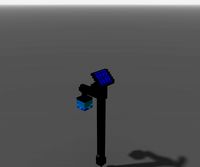
Lamp v2
...lamp v2
3dexport
lamp v2 with solar panel
3d_export
$5
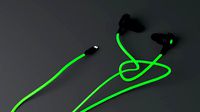
hammerhead v2
...hammerhead v2
3dexport
razer hammerhead v2 headphones, modeled in cinema 4d, render in corona
3d_export
$5
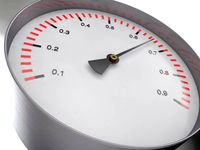
manometer v2
...manometer v2
3dexport
3d_export
$5
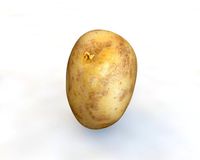
potato v2
...potato v2
3dexport
turbosquid
$52
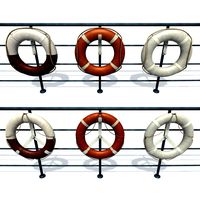
Lifebuoys v2
...squid
royalty free 3d model lifebuoys v2 for download as fbx on turbosquid: 3d models for games, architecture, videos. (1560870)
turbosquid
$2

Mask v2
...turbosquid
royalty free 3d model mask v2 for download as stl on turbosquid: 3d models for games, architecture, videos. (1527741)
turbosquid
free
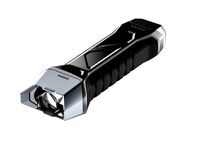
Flashlight V2
...d
free 3d model flashlight v2 for download as , obj, and fbx on turbosquid: 3d models for games, architecture, videos. (1663559)
turbosquid
$29
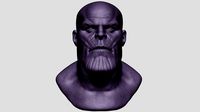
Thanos v2
...
royalty free 3d model thanos v2 for download as ztl and obj on turbosquid: 3d models for games, architecture, videos. (1651077)
turbosquid
$29
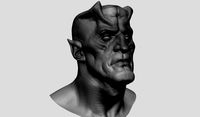
Titan v2
...d
royalty free 3d model titan v2 for download as ztl and obj on turbosquid: 3d models for games, architecture, videos. (1540228)
turbosquid
$29
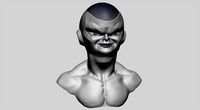
Frieza v2
...
royalty free 3d model frieza v2 for download as ztl and obj on turbosquid: 3d models for games, architecture, videos. (1701238)
